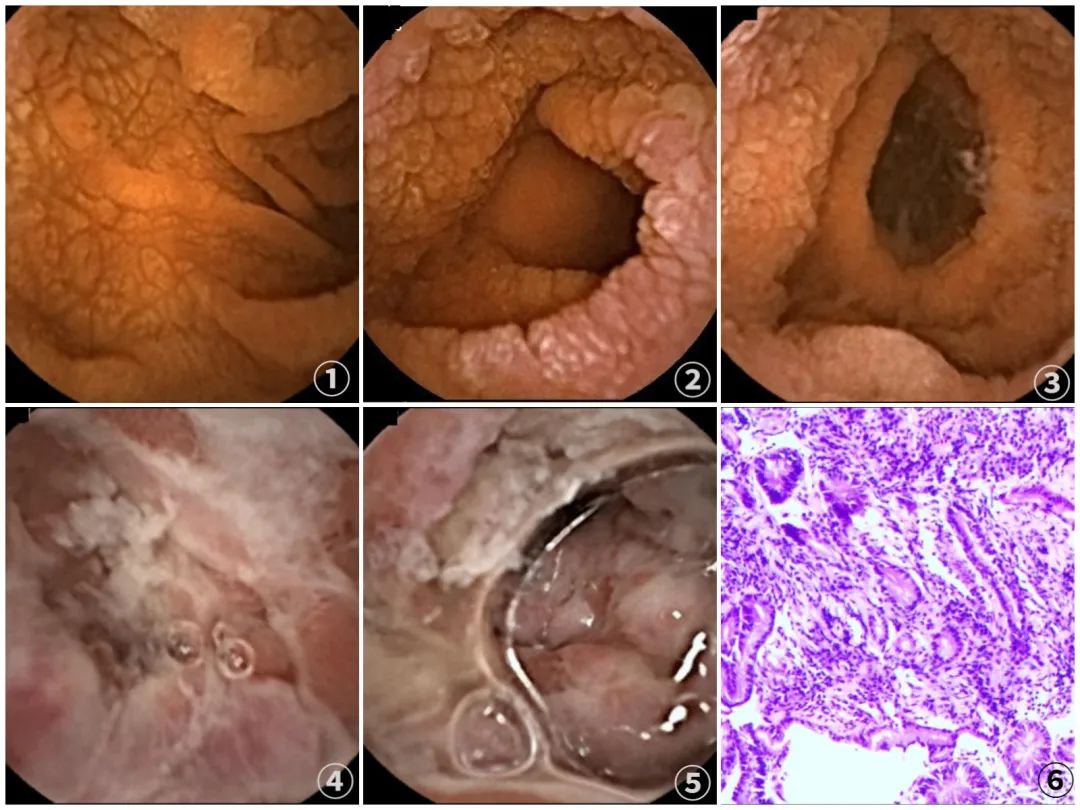GI Blog
In a recent case at Wuhan University Zhongnan Hospital, a middle-aged male patient sought medical attention for persistent abdominal discomfort, marked by six months of abdominal bloating and diarrhea. Despite undergoing conventional diagnostic procedures such as gastroscopy, colonoscopy, and abdominal CT scans, the root cause remained elusive until the application of the OMOM HD Capsule Endoscopy System developed by JINSHAN.

Images 1-5 captured by the OMOM HD Capsule Endoscopy; Image 6: Pathological biopsy section ©Wuhan University Zhongnan Hospital
Professor Qiu Zhao, Director of Endoscopy at Wuhan University Zhongnan Hospital, shared the findings of the capsule endoscopy, revealing distinctive features in the patient's duodenal mucosa. The fold layering of the duodenal mucosa showed signs of atrophy, with a mosaic pattern indicative of Marseilles sign, accompanied by lymphatic duct dilation. Furthermore, the jejunum displayed diffuse map-like ulcers covered with copious pathological secretions, suggesting a high likelihood of concomitant celiac disease and ulcerative jejunitis.
To comprehend the implications of celiac disease, Professor Shutian Zhang, Chairman of the Digestive Center at Beijing Friendship Hospital, elucidates that celiac disease is a primary intestinal malabsorption syndrome triggered by gluten intolerance in genetically predisposed individuals. Also known as gluten-sensitive enteropathy or sprue, it is characterized by specific pathological changes such as villous atrophy and intraepithelial lymphocytic infiltration. The clinical manifestations encompass multisystem damage, primarily presenting as malnutrition syndrome—abdominal pain, diarrhea, and weight loss. The primary treatment modality involves adherence to a gluten-free diet.
The culprit causing discomfort in celiac disease patients is gluten, also known as glutenin or cereal protein. This protein is present in wheat, barley, and rye. Many staple foods, including noodles and bread, fall under the category of gluten-containing foods. Following a confirmed diagnosis, individuals with celiac disease must adhere to a lifelong gluten-free diet to ensure intestinal recovery. Gluten-free grains include rice, corn, millet, sorghum, buckwheat, quinoa, and more.
Experiencing diarrhea after consuming wheat-based products like noodles or bread should prompt immediate avoidance of gluten-containing foods, coupled with prompt medical consultation. Research published in The Lancet indicates an increased risk of small bowel cancer associated with celiac disease, underscoring the importance of early detection and intervention.
In this particular case, the utilization of advanced technologies like high-definition capsule endoscopy system has proven to be a crucial and dependable method for diagnosing gastrointestinal diseases, including conditions like celiac disease. This not only facilitates the possibility of early intervention but also lays the groundwork for more effective disease management.